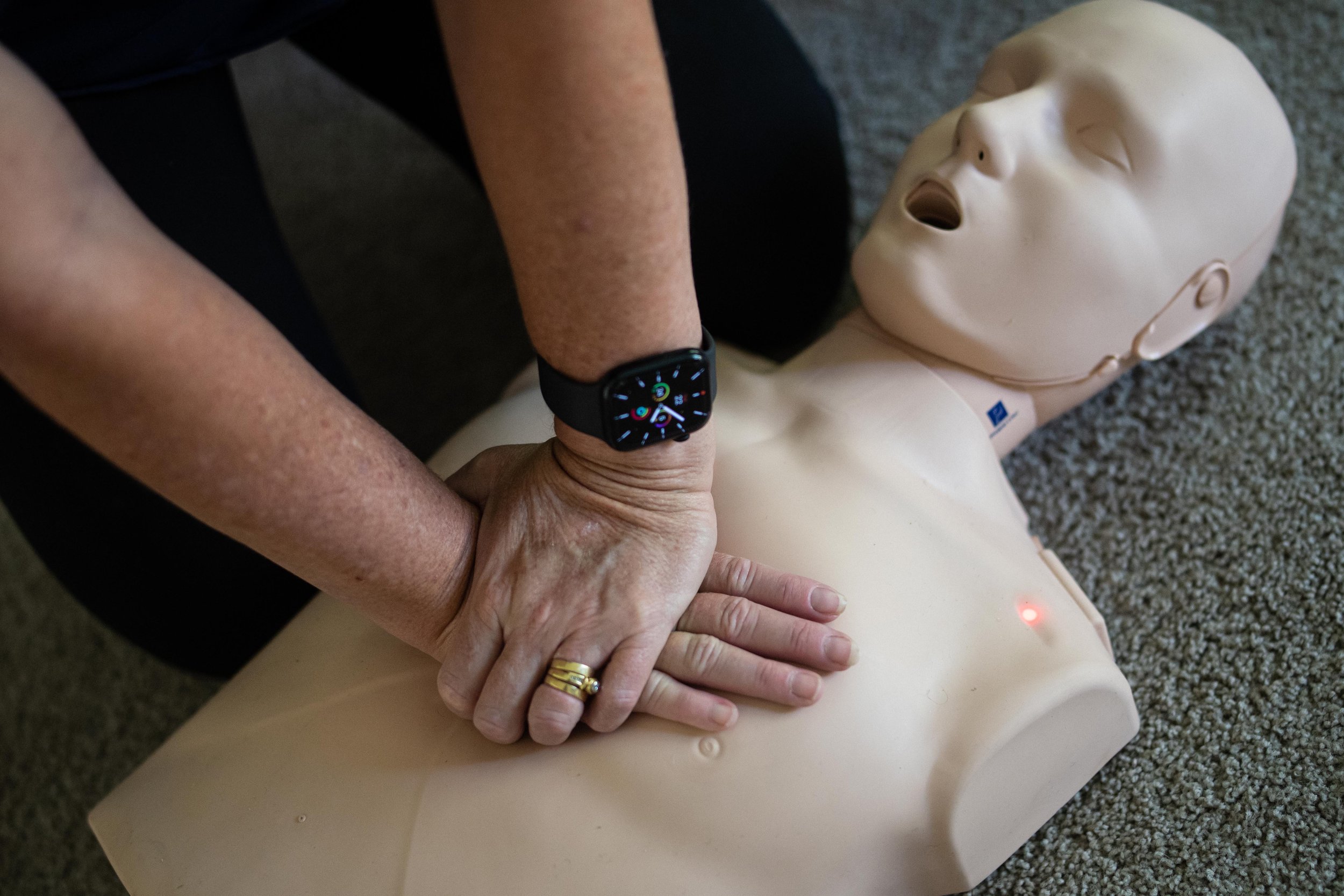What does CPR stand for?
What does CPR stand for?
CPR stands for Cardiopulmonary resuscitation.
What is CPR?
CPR is the process of performing chest compressions and rescue breathing to try and restore circulation and breathing in someone who is in cardiac arrest.
The goal of CPR is to deliver oxygenated blood to the heart and brain, which can help to preserve brain function and prevent permanent damage.
There are two main components to CPR:
Chest compressions - performed by pressing down on the chest with the palms of your hands, in an effort to pump blood to the heart and brain - it prevent brain damage
Rescue breathing - involves blowing air into the person's mouth, which can help to deliver oxygen to their body
How to perform effective CPR?
CPR is simple, if you know what to do.
Find the middle of the chest
Keep the elbows locked straight.
Go hard, go fast and don’t stop.
30 Compressions, 2 Breaths.
1/3 depth of the chest
100-120 beats per minute
Repeat until the emergency services arrive
Here is a video show effective CPR.
What is the chance of surviving if your heart stops?
Someone’s chance of survival is much greater if CPR is commenced immediately.
The Red Cross reports that if CPR is given within the first minute of someone's heart stopping, their chance of survival can be up to 80%. For every minute that CPR is not delivered there is a 10% decrease in the person’s chance of survival.
To book in for your CPR course, click here.


